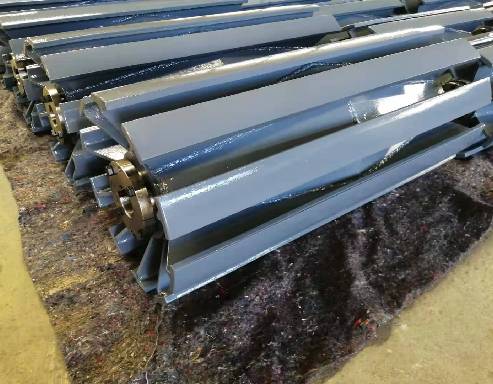 Afrikaans
Afrikaans  Albanian
Albanian  Amharic
Amharic  Arabic
Arabic  Armenian
Armenian  Azerbaijani
Azerbaijani  Basque
Basque  Belarusian
Belarusian  Bengali
Bengali  Bosnian
Bosnian  Bulgarian
Bulgarian  Catalan
Catalan  Cebuano
Cebuano  Corsican
Corsican  Croatian
Croatian  Czech
Czech  Danish
Danish  Dutch
Dutch  English
English  Esperanto
Esperanto  Estonian
Estonian  Finnish
Finnish  French
French  Frisian
Frisian  Galician
Galician  Georgian
Georgian  German
German  Greek
Greek  Gujarati
Gujarati  Haitian Creole
Haitian Creole  hausa
hausa  hawaiian
hawaiian  Hebrew
Hebrew  Hindi
Hindi  Miao
Miao  Hungarian
Hungarian  Icelandic
Icelandic  igbo
igbo  Indonesian
Indonesian  irish
irish  Italian
Italian  Japanese
Japanese  Javanese
Javanese  Kannada
Kannada  kazakh
kazakh  Khmer
Khmer  Rwandese
Rwandese  Korean
Korean  Kurdish
Kurdish  Kyrgyz
Kyrgyz  Lao
Lao  Latin
Latin  Latvian
Latvian  Lithuanian
Lithuanian  Luxembourgish
Luxembourgish  Macedonian
Macedonian  Malgashi
Malgashi  Malay
Malay  Malayalam
Malayalam  Maltese
Maltese  Maori
Maori  Marathi
Marathi  Mongolian
Mongolian  Myanmar
Myanmar  Nepali
Nepali  Norwegian
Norwegian  Norwegian
Norwegian  Occitan
Occitan  Pashto
Pashto  Persian
Persian  Polish
Polish  Portuguese
Portuguese  Punjabi
Punjabi  Romanian
Romanian  Russian
Russian  Samoan
Samoan  Scottish Gaelic
Scottish Gaelic  Serbian
Serbian  Sesotho
Sesotho  Shona
Shona  Sindhi
Sindhi  Sinhala
Sinhala  Slovak
Slovak  Slovenian
Slovenian  Somali
Somali  Spanish
Spanish  Sundanese
Sundanese  Swahili
Swahili  Swedish
Swedish  Tagalog
Tagalog  Tajik
Tajik  Tamil
Tamil  Tatar
Tatar  Telugu
Telugu  Thai
Thai  Turkish
Turkish  Turkmen
Turkmen  Ukrainian
Ukrainian  Urdu
Urdu  Uighur
Uighur  Uzbek
Uzbek  Vietnamese
Vietnamese  Welsh
Welsh  Bantu
Bantu  Yiddish
Yiddish  Yoruba
Yoruba  Zulu
Zulu Exploring Various Types of Conveyor Rollers for Efficient Material Handling Solutions
Different Types of Conveyor Rollers
Conveyor rollers play a crucial role in the functioning of conveyor systems, which are widely used across various industries to transport materials efficiently. These rollers are designed to support the weight of the materials being conveyed, reduce friction, and facilitate smooth movement. Understanding the different types of conveyor rollers can help businesses choose the right solution for their specific needs, ultimately improving productivity and safety.
1. Standard Rollers The most common type of conveyor roller, standard rollers are typically made of steel or plastic and are used in many applications. They are available in various diameters and lengths and are often equipped with bearings to allow for smooth rotation. Standard rollers are essential for transporting goods on roller bed conveyors, and their versatility makes them suitable for a wide range of industries, from manufacturing to warehousing.
Different Types of Conveyor Rollers
3. Return Rollers As materials are transported along the conveyor system, some rollers are specifically designed for the return path of the conveyor belt. Return rollers help support and guide the empty conveyor belt back to the loading point. They are typically lower-profile and may be designed to minimize friction and wear on the belt. Return rollers are critical for maintaining the efficiency and reliability of the conveyor system.
different types of conveyor rollers

4. Guided Rollers Guided rollers assist in maintaining the alignment of the conveyor belt, ensuring that it remains centered during operation. These rollers typically have side guides or flanges that help prevent the belt from drifting off course. Guided rollers are particularly useful in high-speed applications or on curved sections of the conveyor system where the risk of misalignment is greater.
5. Specialty Rollers Certain applications may require specialty rollers engineered to meet specific needs. For example, there are rollers designed for high-temperature environments, which can withstand extreme heat without degrading. Others might be coated with materials to provide additional traction or designed with built-in magnets for unique conveying solutions. Specialty rollers ensure that conveyor systems can function effectively under unique operating conditions.
6. Plastic Rollers As industries lean towards lightweight and corrosion-resistant materials, plastic rollers have gained popularity. They are ideal for environments where rust could be a concern, such as food processing or pharmaceuticals. Plastic rollers are also lighter than their metal counterparts, which can reduce energy consumption and wear on the system.
In conclusion, selecting the right type of conveyor roller is essential for optimizing the efficiency and lifespan of a conveyor system. Businesses must evaluate their specific needs, including the type of materials being transported, load conditions, and environmental factors, to make an informed choice. By understanding the functions and applications of different conveyor rollers, companies can enhance their operational productivity while ensuring safety and reliability in their material handling processes.
-
Revolutionizing Conveyor Reliability with Advanced Rubber Lagging PulleysNewsJul.22,2025
-
Powering Precision and Durability with Expert Manufacturers of Conveyor ComponentsNewsJul.22,2025
-
Optimizing Conveyor Systems with Advanced Conveyor AccessoriesNewsJul.22,2025
-
Maximize Conveyor Efficiency with Quality Conveyor Idler PulleysNewsJul.22,2025
-
Future-Proof Your Conveyor System with High-Performance Polyurethane RollerNewsJul.22,2025
-
Driving Efficiency Forward with Quality Idlers and RollersNewsJul.22,2025





























